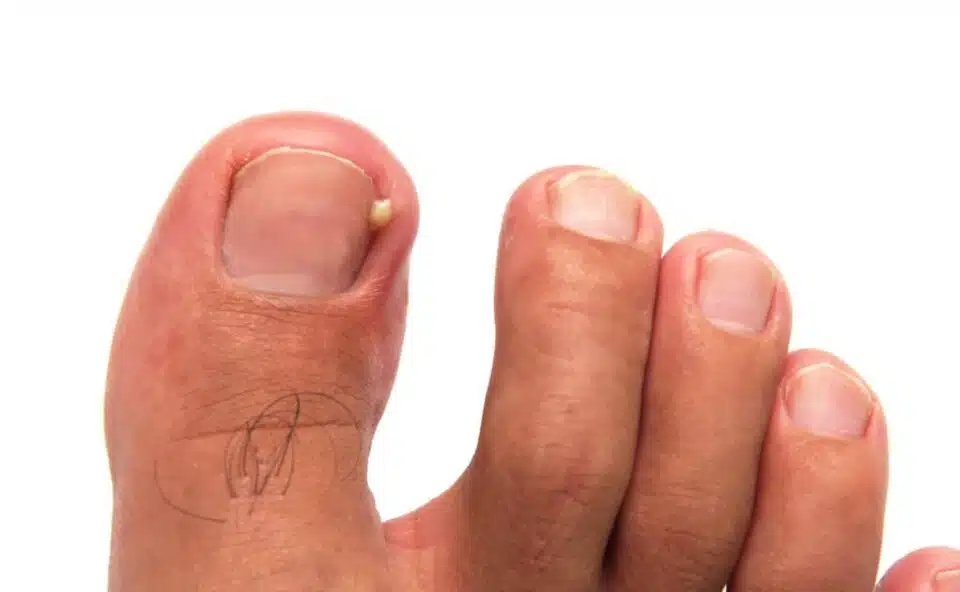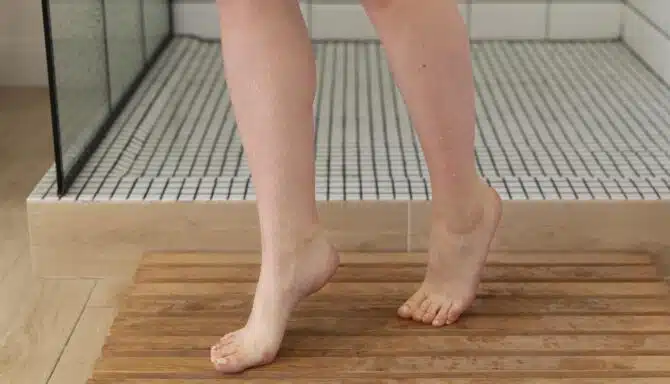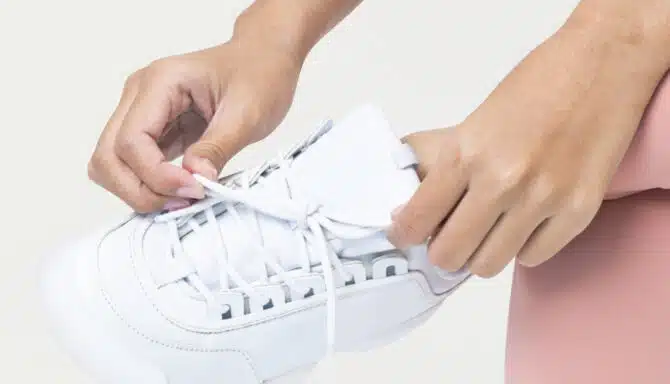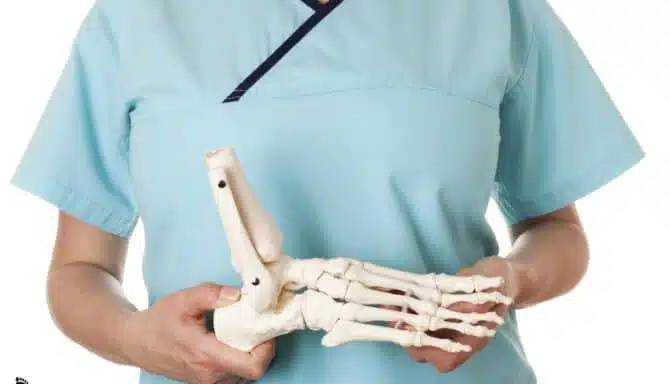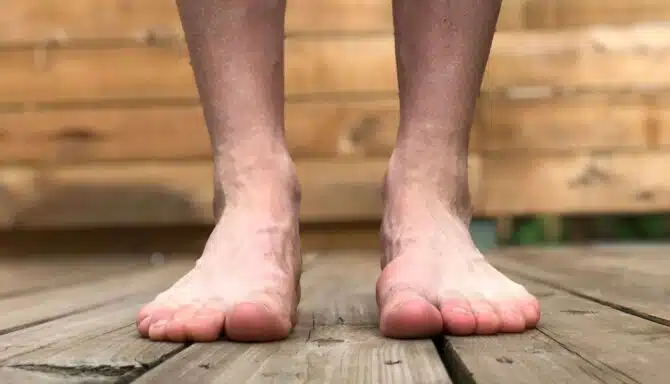At some point, we’ve all experienced the discomfort of a pesky ingrown toenail. It occurs when the nail plate grows into the surrounding skin and causes inflammation. Ingrown toenails are among the most common toenail conditions and are particularly common in the big toe.
Whether it’s a result of a stubbed toe, improper nail-trimming habits, or the perils of snug footwear, ingrown toenails can quickly turn into a painful ordeal. In this article, we’ll delve into the causes behind these troublesome toenail invaders, explore effective home remedies to ease the discomfort, and discuss when to seek professional help for a more permanent solution.
Causes of Ingrown Toenails
Improper nail trimming
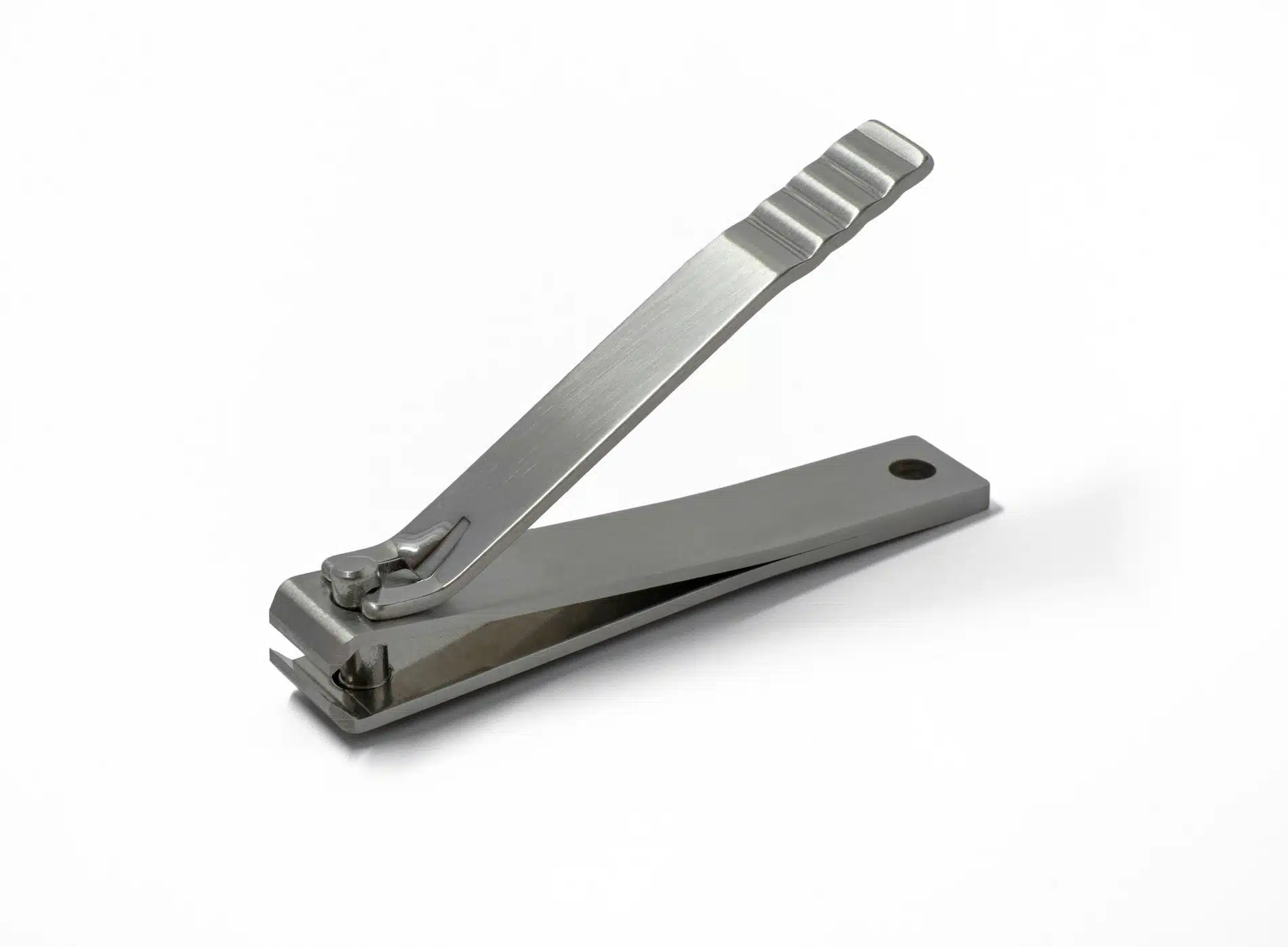
Cutting toenails too short or rounding the edges can encourage the nail to grow into the skin. The skin surrounding the nail should not be higher than the toenail as this may cause the nail to grow into the skin instead of on top of it. Instead, cut the nail to the skin’s edge and not any deeper.
Ill-fitting shoes
Tight or narrow shoes can pressure the toes, causing the nails to grow abnormally.
Injury or trauma
Stubbing your toe or other injuries can lead to ingrown toenails.
Genetics
Some people may have a genetic predisposition to ingrown toenails.
Poor foot hygiene
Not keeping the feet clean and dry can affect the skin around the nail bed, and contribute to the development of ingrown toenails.
At-home remedies for Ingrown Toenails
At-home remedies are an option while you wait for professional treatment. Note: Never attempt to cut the ingrown toenail yourself.
Warm soaks

Soak the affected foot in warm water for 15-20 minutes daily to reduce inflammation.
Cotton ball or dental floss
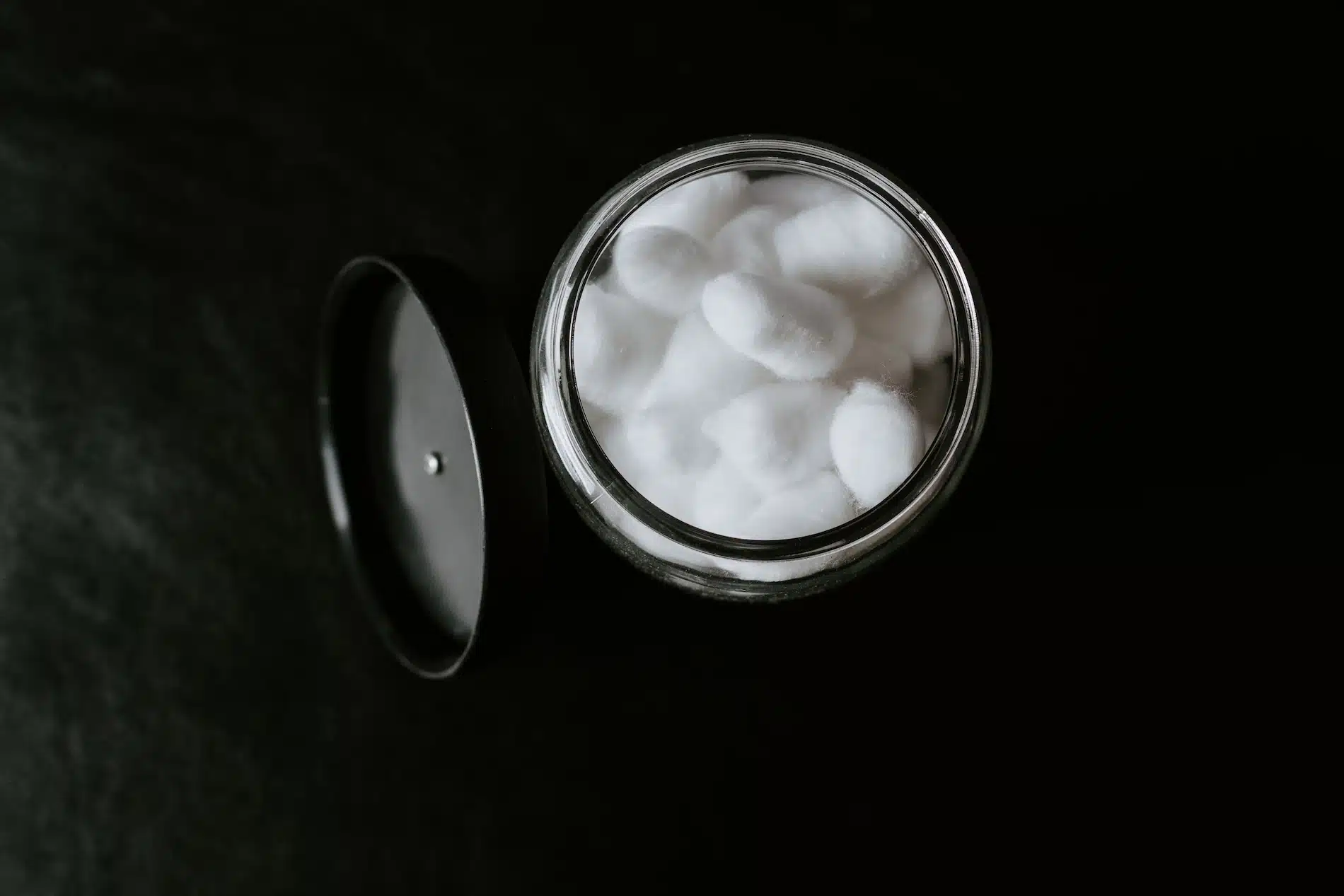
Gently lift the ingrown edge of the nail and place a small piece of cotton or dental floss underneath to encourage the nail to grow above the skin.
Antibiotic ointment
Apply an antibiotic ointment to prevent infection.
Wear proper footwear
Choose shoes with enough room for your toes, and avoid tight-fitting footwear.
Avoid aggravating activities
If possible, avoid activities that put extra pressure on the toes.
Professional treatment remedies for Ingrown Toenails
At-home treatment is only so effective. When in doubt, it’s best to consult a professional for proper care and treatment. A chiropodist or foot specialist may perform any number of the following professional treatments:
Proper toenail care and trimming
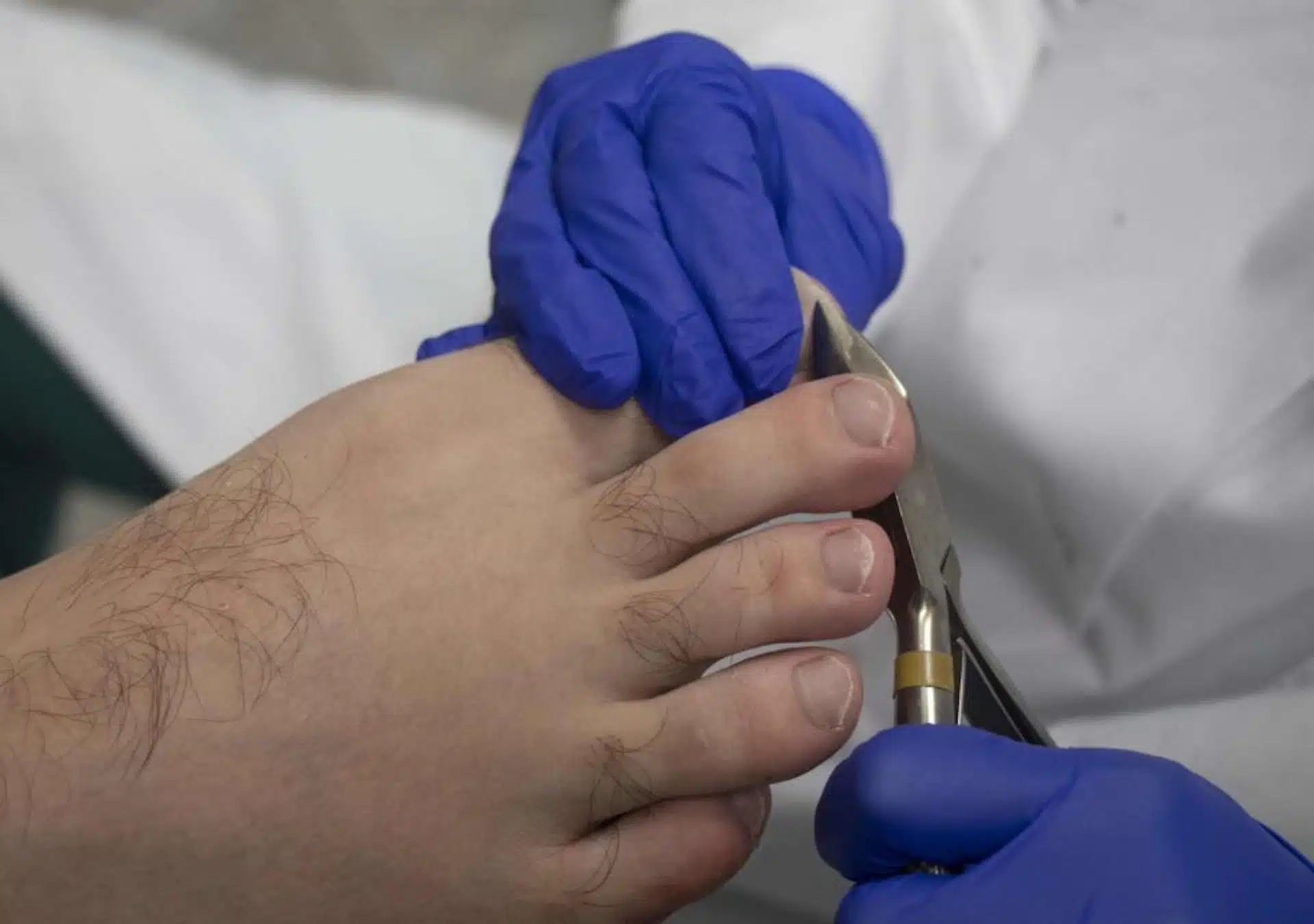
Cutting toenails too short or at the wrong angle can cause ingrown toenails. A chiropodist can properly trim and cut your toenails in a way that promotes proper nail growth. They can trim to treat an existing ingrown toenail, or trim your toenails preventatively, for example, during a medical procedure or nail care appointment.
A chiropodist can also soften the skin, lift the edge of the nail from the skin, and then prop the corner of the nail over the skin edge until the skin heals. Finally, as it relates to toenail care, a specialist may apply a freezing gel or a Lidocaine to remove the ingrown portion of the toenail.
Onyfix
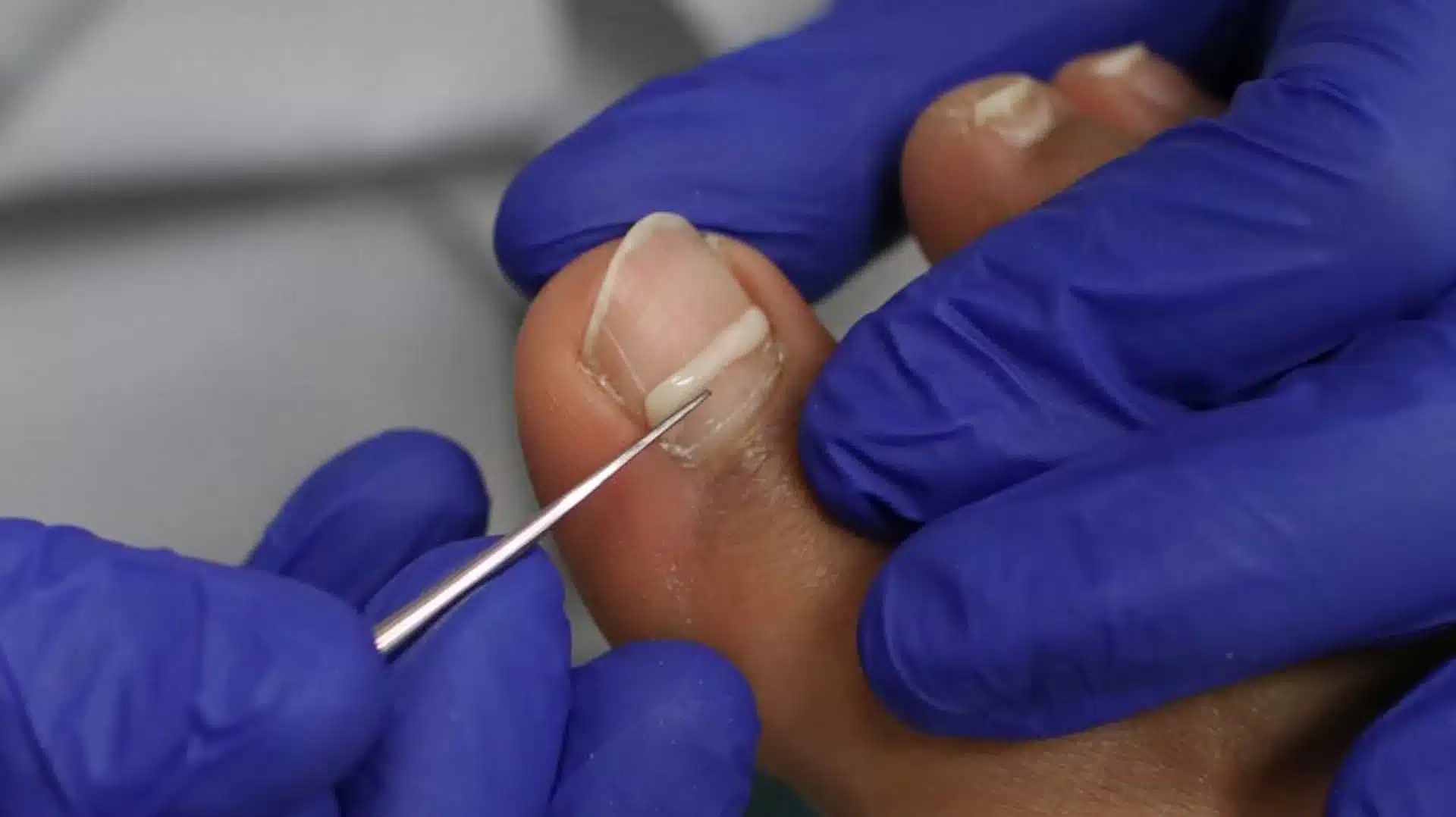
Onyfix is a special composite material that the chiropodist applies it in a band across the nail. It acts like a nail brace to correct the nail’s growth.
Partial nail avulsion (PNA)
A local anesthetic first numbs the toe. A narrow vertical strip is then removed from the edge of the affected side of the nail down the entire length. Antibiotics and a dressing are applied to the exposed nail bed to prevent infection. This surgical procedure is performed if other treatment options do not work.
Total nail avulsion (TNA)
Total nail avulsion is similar to a partial nail avulsion, except the whole nail is removed. This surgical procedure is performed if other more conservative approaches are insufficient.
Phenol
This chemical is applied to the nail’s root beneath the cuticle to prevent regrowth. It may be used during a PNA or TNA to prevent nail regrowth.
When to seek professional help for Ingrown Toenails
It can be challenging to differentiate what’s serious versus not. Sometimes, minor ingrown toenails can be treated at home in their early stages. Other times, you should seek professional help. Here are a few scenarios that should have you consider seeking professional help:
Any signs of infection
If there is increased redness, swelling, or drainage of pus, it may indicate an infection that requires medical attention.
Moderate to severe pain
Seek professional help if the toenail pierces the skin or if you experience moderate to severe pain.
Persistent ingrown toenails
If ingrown toenails are a recurring problem, seeing a chiropodist for a more permanent solution may be necessary.
Underlying medical conditions

Individuals with diabetes or circulatory disorders should seek professional care for ingrown toenails at any stage.
It’s essential to address ingrown toenails promptly to prevent complications. If you’re unsure how to treat an ingrown toenail or suspect an infection, it’s advisable to consult with a healthcare professional or podiatrist for proper diagnosis and treatment.
